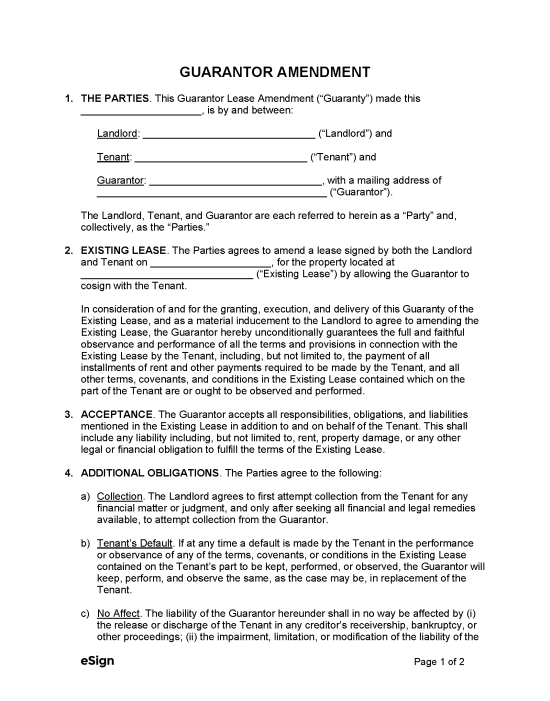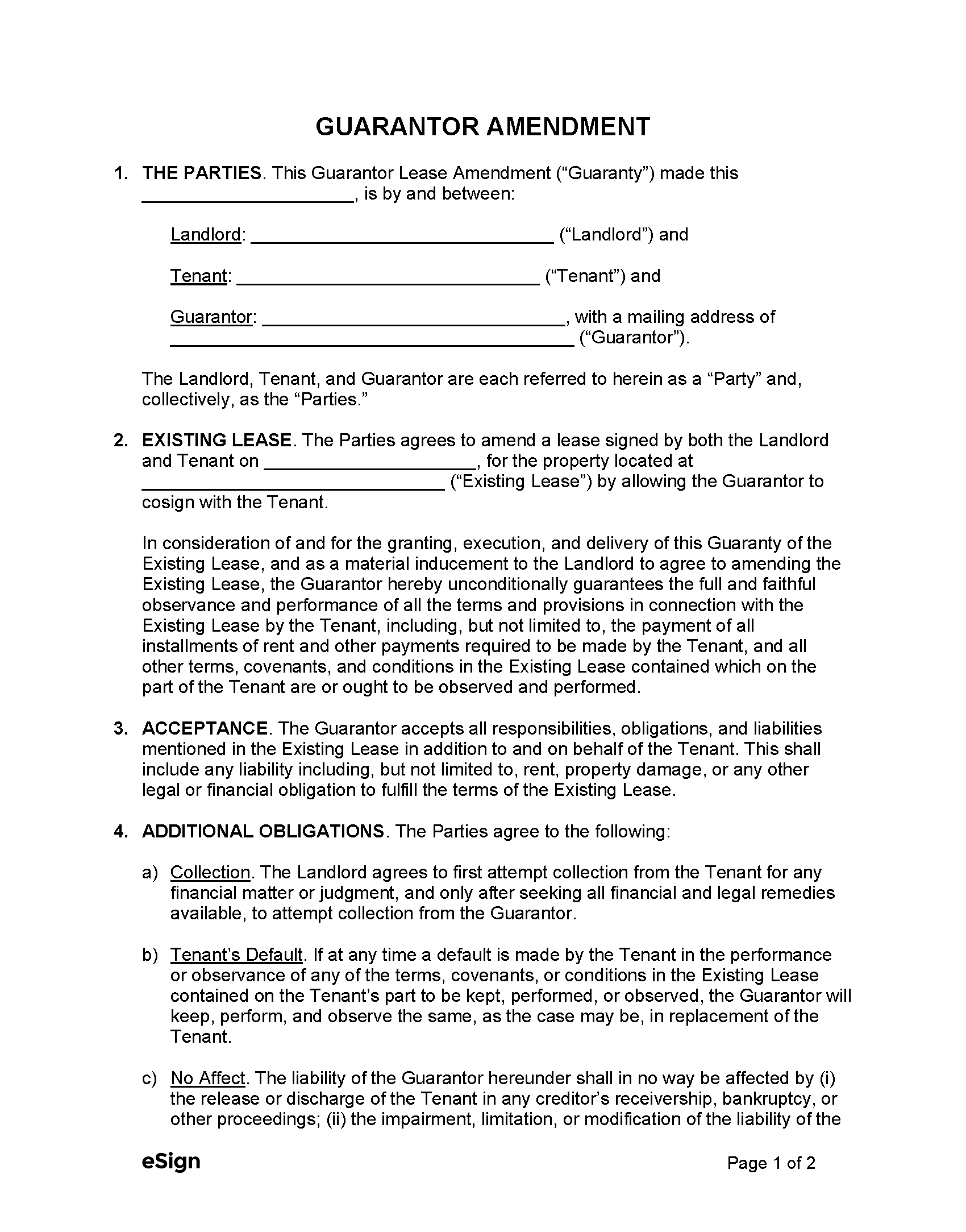Commonly Used When
When a tenant has poor or little credit history, a landlord might ask them to sign a lease with a guarantor. By signing the guarantor amendment, the landlord is ensured that a responsible party will uphold the lease terms if the tenant defaults.
Sample
Download: PDF, Word (.docx), OpenDocument
GUARANTOR LEASE AMENDMENT
1. THE PARTIES. This Guarantor Lease Amendment (“Guaranty”) made this [MM/DD/YYYY], is by and between:
Landlord: [LANDLORD’S NAME] (“Landlord”) and
Tenant: [TENANT’S NAME] (“Tenant”) and
Guarantor: [GUARANTOR’S NAME], with a mailing address of [ADDRESS] (“Guarantor”).
The Landlord, Tenant, and Guarantor are each referred to herein as a “Party” and, collectively, as the “Parties.”
2. LEASE AGREEMENT. The Parties agrees to amend a lease signed by both the Landlord and Tenant with a date of [LEASE DATE], for the property located at [RENTAL PROPERTY ADDRESS] (“Existing Lease”) by allowing the Guarantor to cosign with the Tenant.
3. ACCEPTANCE. The Guarantor accepts all responsibilities, obligations, and liabilities mentioned in the Existing Lease in addition to and on behalf of the Tenant. This shall include any liability including, but not limited to, rent, property damage, or any other legal or financial obligation to fulfill the terms of the Existing Lease.
Collection. The Landlord agrees to first attempt collection from the Tenant for any financial matter or Judgment, and only after seeking all financial and legal remedies available, to attempt collection from the Guarantor.
IN WITNESS WHEREOF, the Guarantor has executed this Guaranty as of the date first written above.
Guarantor’s Signature: ___________________ Date: ___________
Print Name: ___________________

